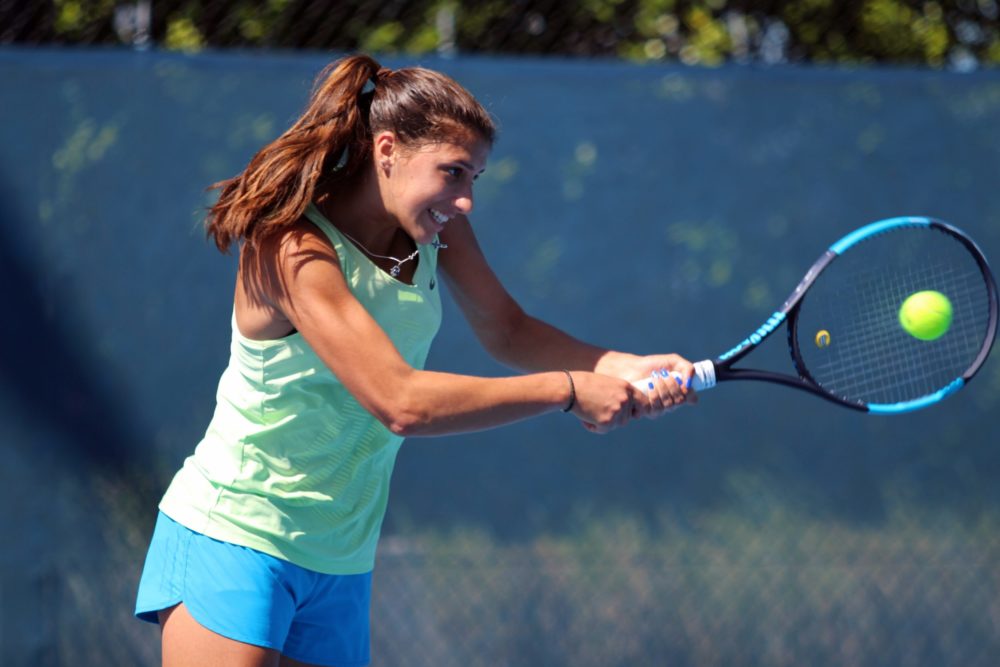It’s seldom practiced but one of the most important shots in women’s tennis. Being able to build points and then finish at the net with efficient swing volleys is a must for
a player wishing to make a living on the WTA Tour. It is true that having a bigger forehand
equals shorter points, as the racquet speed on a forehand is greater than that of a
backhand. The same can be said for forehand swing volleys. Players will run around their
backhands and hit forehand swing volleys when they have the option to do so. They can
generate great racquet head speed by using their whole body correctly, and for many
players, it is a more natural and aggressive option than an overhead or a high forehand
volley. Let’s take a detailed look at this shot, as it should be a vital part of every club
players repertoire.
Grip, Contact Point and Swing
Majority of players at all levels of tennis use the semi-western forehand grip. More
players are starting to use a hybrid grip, meaning that their index base knuckle is
positioned between an eastern and semi-western forehand grip. Justine Henin is a player
who used this grip so effectively to execute forehands and topspin forehand swing
volleys with. The western and eastern forehand grips can be used, but to really hit this
shot with hard penetrating pace and topspin, the best grips are the semi-western and
hybrid grips mentioned.
The important thing with the swing is to make sure that the hitting hand accelerates up
and through the ball from an inside to out swing pattern from the slot, just the same as it
does on a topspin forehand groundstroke. I see too many players trying to hit hard and flat
forehand swing volleys with very little margin for error. If we take a look at any of the
recent grand slam winners on the WTA Tour, we will see that at contact their racquet
faces are slightly closed, as a result of them accelerating their hitting hands up the back of
the ball. They may cover the ball slightly, but this indicates that there is enough hard
topspin on their forehand swing volleys. We see that their forearms and wrists are
pronating into the ball and their hands are incredibly loose and relaxed through the
contact zone.
The common mistake that I see with players at many levels, is that they move up to the
high floating ball and they turn their body and step back with their outside leg so that
their body weight is going backwards and this causes them to load the weight on the
outside part of their outside leg. This means that the body momentum that is required to
make this shot penetrating has been lost. Players need to move up to the ball and turn and
load the weight on the inside part of their outside leg so that their body weight is centered
and they go forwards up and into the ball. Sometimes this mistake is caused by
inefficient ball judgment or inefficient footwork but mostly it is just a bad habit, as I see
players do this when they are in good position.
Stances
I believe that players should be able to execute this shot with neutral stances, semi-open
stances, part open stances, and full open stances. We see Wozniacki, Muguruza and Halep
as players who hit this shot very well off of all the stances. Knowing what stance to use
for which type of ball is situational. When we have time, we can use either neutral or
semi-open so that we get more body weight going into the shot toward our intended
hitting target. We use open if we have to move a little further to our right to hit the shot,
assuming the player is right-handed. If we intend to hit down the line and have time, I
prefer the neutral stance, and if we have time to set our feet and we want to hit crosscourt,
I prefer the semi-open or part open so that the hips and shoulders don’t get locked during
the forward part of the swing.
When to use this shot?
The forehand topspin swing volley can be both a putaway shot and a setup shot. After
punishing the opposition with penetrating groundstrokes, and eliciting a weak reply in the
form of a high ball, we can move forward and hit the swing volley and look to finish the
point. I do not have any general rules or guidelines as to where the majority of topspin swing
volleys should be hit. However, I do believe that players should work on hitting this shot
to deep to both corners and be able to execute angles. Players should work on hitting this
shot from both the midcourt and short court areas. I also strongly suggest working on
executing forehand inside out and inside in topspin swing volleys.
A lot of players on the WTA Tour and a few on the ATP Tour actually prefer to hit the
forehand topspin swing volley instead of an overhead. We see Wozniacki doing this a lot
and on the men’s side, Andre Agassi came to mind. For these players, this shot is more
natural and more comfortable.
To be able to play high levels professional tennis, you must have an efficient topspin
forehand swing volley. Finishing points at the net in today’s game are the norm rather than the exception so be sure to practice swing volleys as much as you can!

